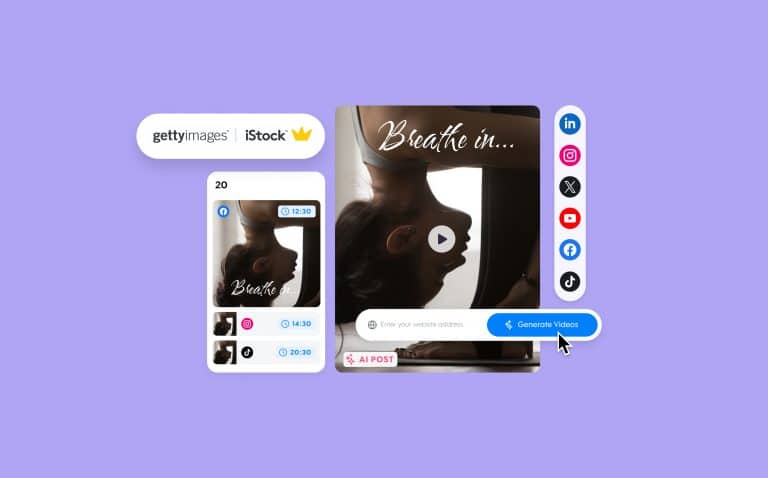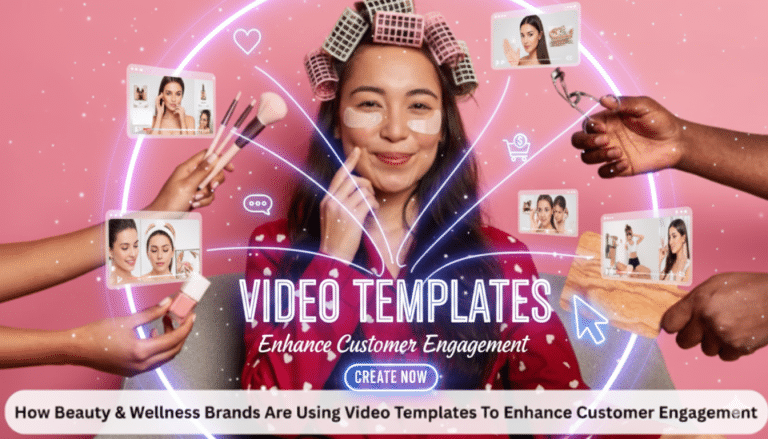
The Definitive Guide to YouTube Marketing
Whether it’s advertisements, video pitches or branded content, the market for video content is booming. The surge in demand for video has made YouTube one of the most effective marketing tools around. YouTube content helps brands attract more viewers and serves as a place to engage with their customers.
The use of YouTube for marketing isn’t just confined to start-ups. Even the largest companies have recognized its value as a promotional channel. So how can your business take advantage of YouTube’s features to build its brand, attract new customers, and generate new revenue? This guide will take you through all the steps of starting and promoting your channel.
Let’s get started!
How YouTube marketing can expand your business
YouTube offers an unrivaled platform for video marketing as it is the only one of its kind that allows you to upload full-length branded content. With 2 billion regular users, YouTube gives you access to new audiences and helps you expand your reach. Here are two reasons YouTube is such an effective tool for video content marketing.
First, it utilizes an algorithm that suggests videos to users based on their activity. The Discover feature allows you to reach out to consumers without being intrusive. This feature is handy for young businesses that want to drive organic traffic to their YouTube channel and website through great content.
Second, YouTube was one of the first platforms to use influencer marketing and has a flourishing influencer community, consisting of content creators and millions of loyal followers. Brands can tap into influencers and their networks to build their credibility and expand their audience base. Influencers also help brands leverage the power of referral traffic to build a loyal audience.
A step-by-step guide to YouTube marketing
YouTube marketing allows you to share content that educates and entertains. You can upload tutorial videos, webinars, humorous content, advertisements, and much more on the platform.
The comments section on videos also makes YouTube an engaging platform as it allows you to gauge the reactions to your content and communicate directly with your audience. The direct feedback will help you gather ideas for future content and find out what resonates with your audience.
So, how do you promote your business on YouTube? This section will look at the steps involved in setting up your YouTube video marketing campaign.
1. Create a YouTube channel and brand account
The first step is setting up your brand account. Include all relevant information in your “About” page, including links to your website and other social media accounts. Remember that your YouTube marketing efforts should serve as a gateway to driving traffic to your site. Include all relevant links, such as specific product pages you’d like to promote, for easy access.
Use the brand’s logo as your profile picture. If you are a small business owner or freelancer, you may use your photograph instead. You can keep the channel art (the banner that appears at the top of the channel) simple by using your logo, or get creative with a visual depiction of your products and services. Make sure the color scheme matches your overall branding and that the YouTube banner size is correct.
 Source: Clean My Space YouTube
Source: Clean My Space YouTube
Take a look at Clean My Space’s YouTube channel, which uses the banner image to tell users the number of videos it has uploaded and when they can expect new content. The channel art also includes links to the website and other social media accounts so users can stay updated on the platforms of their choice.
Finish the set-up by including a brief description of your channel and business. Once you have a few videos uploaded, revisit the page to add a featured video that appears at the top of the page. You can also use an introduction video that highlights your business and products. In the example above, Clean My Space pinned a video that also serves as an introduction to the channel. Make sure to add the relevant YouTube tags to each video you upload to the channel.
2. Set SMART targets for your channel
Ideally, you want your first video to go viral and drive traffic to your site, but it often takes a long time for even the best-known brands to build a decent subscriber base and stand out from the crowd.
Instead, set goals that are SMART: Specific, Measurable, Attainable, Relevant, and Time-bound.
SMART goals enable you to create a campaign that is well-defined and measurable, both in terms of deliverables and timelines. For example, a goal to attract a particular number of subscribers within the first month is a SMART goal. Since your goals will drive your team’s efforts, give them tangible and achievable goals to accomplish.
3. Draw up a schedule (and stick to it)
Even the best, most relevant content will not attract customers if you upload sporadically or suddenly stop posting altogether. Consistency is as essential as quality in YouTube marketing. Most prominent YouTube personalities have a strict posting schedule, and their followers know when they can expect a new video to be uploaded.
Draw up a realistic posting schedule and content plan, keeping in mind the average production time and allowing some space for unplanned videos. Factor in plenty of time for shooting and post-processing. You can also create content in advance and queue your videos to be posted later.
 Source: Oberlo
Source: Oberlo
When you create your schedule, you should also specify a posting time. Just like any other platform, YouTube has busier times and quieter times. According to a study by Oberlo, weekday viewership peaks in the evening. This means you can post your videos in the late afternoon to reach a larger audience. On weekends, people start watching early, so you may want to post new content a bit earlier in the day.
4. Learn about different types of marketing videos
One of the benefits of YouTube marketing is that you can post all kinds of branded content, from tutorials to fun office videos to webinars, and much more. As a brand, you want to mix up your content to keep it engaging.
Here are a few kinds of marketing videos that you can use in your campaigns:
How-to videos are perhaps the most common type of marketing videos. Tutorials offer your viewers information on how to do something. You can create a walkthrough of your product with a voice-over or create a tutorial featuring your team members.
Whatever the tutorial is about, break down the process into easy-to-follow steps. For example, if you’re promoting an email finder, the video should show users how to sign up for the service and look for email addresses. You may even include real-life examples to give your viewers a look at your product in action.
 Source: Slack YouTube
Source: Slack YouTube
Humorous videos can range from behind-the-scenes office videos to entertaining content that pokes fun at industry tropes. Take a look at Slack’s “So Yeah, We Tried Slack” video campaign, which documents the then-young company’s CEO trying to secure another company’s business and being rebuffed. The ad cleverly talks about the benefits of the product while being highly entertaining.
Product videos are short videos that highlight the value of a company’s products and services. The videos usually follow a person or business and show how the product fits into their day-to-day operations.
Interviews and webinars are perfect when you want to build your credibility and expertise. Sharing interviews with industry experts will help your brand become a great source of information for anyone looking to learn more about the industry.
Salesforce does this well by uploading interviews from its Dreamforce conference, where the company invites the biggest names in the business software solutions industry:
 Source: Salesforce YouTube
Source: Salesforce YouTube
Varying the type of content you upload enables you to move away from a pure sales proposition to one that is driven by value. Don’t be afraid to innovate and create informative and entertaining video content.
5. Shoot and edit awesome content
After you have decided on the kind of video content you want to post, it’s time to start producing it. There are a few steps and best practices you need to follow when you shoot your videos. First, create a storyboard that details every frame, including spoken lines and images. Use a good quality camera and microphone. Include the different camera angles, and always take more footage than needed so you’ll have different options.
Once you have the raw footage, it is time to edit the video and include effects and music. Ensure that you use copyright-free music and images in your video (or get permission from the copyright holder before using their content).
YouTube has its own inbuilt editing tool, which means you don’t need pricey editing software to produce great videos.
6. Perform an SEO analysis on your videos
YouTube is both a social platform and a search engine. To find a video, you first have to go to the search bar and type in a keyword, just like you would to run a Google search. Because YouTube is also a Google product and YouTube content shows up on Google searches, you need to do SEO on your video content as well. Here are a few quick tips to help you master YouTube SEO:
- Make sure you use the right tags for your channel so YouTube knows what it is about.
- Use keyword research to use the right words in your video headlines and descriptions.
- Unknown to many video marketers, YouTube also considers the length of a video when it comes to ranking it in search results. The longer the video, the better your videos are ranked.
- YouTube also looks at the comments and other engagement metrics like shares or likes to judge the relevance of your content.
Optimizing your content for Google and YouTube search makes your video content easy to find for your target audience.
7. Promote your channel
You can’t just create and post great content and expect new viewers to find it. You need to promote your channel to reach a wider audience. Cross-promote your YouTube channel on your other social media accounts to build your subscriber base.
Another way to promote your channel is to include the link to your YouTube account on your website. If you have a company blog, you can backlink to your YouTube page or embed your YouTube videos within your blog content.
You can also use email marketing to promote it to your email list subscribers – including a video within an email is a great way to get more opens and clicks.
8. Understand YouTube analytics
YouTube analytics is a treasure trove of valuable information. It can be daunting to take in all the metrics that are available to you at first. While YouTube tracks dozens of data points, you can focus on the following metrics when you’re getting started:
- Watch time: This measures the amount of time your viewers spend watching your videos. For YouTube, videos with a higher watch time signal that the content holds value for the viewers. If they watch the start of the video and then leave, it might signal that the content is boring or not providing value.
- Traffic source: This metric lets you know how your viewers find your content. It allows you to determine the promotional channels that drive the most traffic to your videos and discover which channels are underperforming.
- Engagement report: This helps you understand your audience’s reaction to your content. It enables you to identify the videos that get the most comments, shares, and likes. It also allows you to see which calls to action (placed usually on YouTube cards and content cards during the video outro) work best.
- Demographics: One of the critical elements of any marketing campaign is the buyer persona. This report helps you break down viewer characteristics such as age, gender, and location and allows you to come up with targeted content for each segment.
YouTube marketing is undoubtedly one of the most lucrative platforms to engage with your audience and drive more consumers to your brand. But if you want to reap the full benefits, you need to watch your content’s performance very closely and see how it compares to your competitors’ videos.
Over to you
YouTube, with its vast viewership and creator-friendly tools, can form the centerpiece of your video marketing strategy. It enables you to attract more consumers to your site and spread awareness about your brand.
Using the SMART approach to setting goals and building a video content strategy will help you create videos that produce tangible results, while uploading content consistently will keep your audience engaged. To keep your content fresh and compelling, don’t be afraid to use different types of videos, including instructional content, interviews, and behind-the-scenes content.
After you shoot and upload your video, give it a boost by optimizing it for YouTube and Google searches, then promote it across your social media and other marketing channels. While you don’t need to monitor all the metrics available to you on YouTube analytics, you do need to focus on those that allow you to identify your traffic sources, engagement rates, and audience sentiment.
Following the steps above will enable you to build a strong foundation for your YouTube channel, which in turn will help increase your conversions and revenue. So, what are you waiting for? Let us know how you get on!


